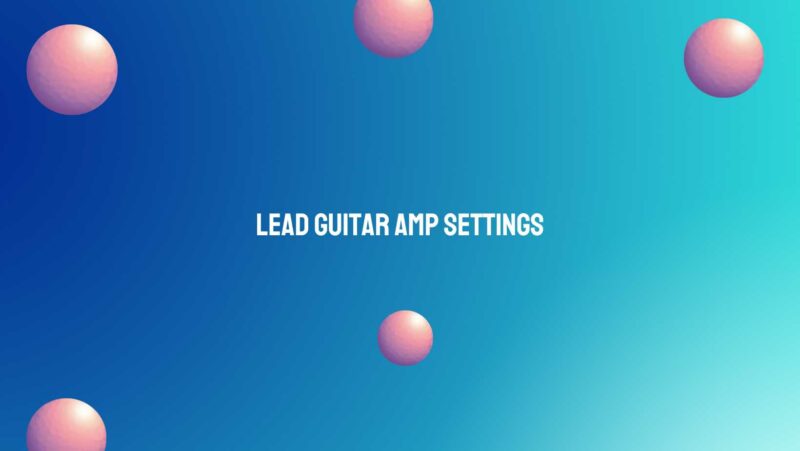The lead guitar is the voice of expression in a band, delivering soaring solos, searing melodies, and powerful riffs that captivate the audience. Achieving the perfect lead guitar tone requires a deep understanding of amplifier settings, as they play a crucial role in shaping your sound. In this comprehensive guide, we will explore the essential lead guitar amp settings, including gain, EQ, effects, and practical tips to help you unleash your inner guitar hero.
- Setting the Gain
Gain, also known as distortion or overdrive, is the foundation of a powerful lead guitar tone. It shapes the intensity and character of your sound. Here’s how to set your gain:
a. Start with a Clean Slate: Begin by turning your amp’s gain knob all the way down, setting your amplifier to a clean, undistorted sound.
b. Gradual Increase: Gradually increase the gain until you achieve the desired level of saturation and sustain. For classic rock, blues, or cleaner lead tones, use a moderate amount of gain. For heavier genres like metal, crank up the gain for a thicker, more aggressive sound.
c. Use Your Ears: Listen carefully as you adjust the gain. Look for the sweet spot where your notes sustain without becoming overly distorted or mushy.
d. Guitar Volume Control: Don’t forget to experiment with your guitar’s volume knob. Rolling it back slightly can clean up your sound, while turning it up can add more edge and bite.
- Equalization (EQ)
EQ settings significantly influence your lead guitar tone’s clarity and presence. Most amplifiers offer a three-band EQ with controls for bass, middle, and treble. Here’s how to dial in your EQ for lead guitar:
a. Treble: Boosting the treble can add brightness and definition to your lead guitar tone. Use it to cut through the mix during solos. Be cautious not to overdo it, as excessive treble can make your tone harsh or piercing.
b. Middle: Adjust the middle frequencies to shape the body and warmth of your sound. A moderate middle setting helps maintain clarity and balance in your lead tone.
c. Bass: While you’ll generally want less bass compared to your rhythm guitar settings, don’t cut it too drastically. A touch of bass can provide depth and warmth to your lead sound.
d. Presence: If your amp has a presence control, consider adding a subtle boost to enhance your tone’s articulation and sparkle.
- Effects and Pedals
Effects pedals can be instrumental in shaping your lead guitar sound. Common pedals for lead guitar include:
a. Distortion/Overdrive: In addition to your amp’s gain, a distortion or overdrive pedal can add extra saturation and color to your sound, allowing you to achieve a wide range of lead tones.
b. Delay: Delay effects create echoes and add depth to your lead lines. Adjust the delay time and feedback settings to suit your playing style.
c. Reverb: Reverb pedals add spaciousness and ambience to your lead guitar sound, enhancing sustain and giving your solos a larger-than-life quality.
d. Wah-Wah: The wah-wah pedal can shape your lead tone dynamically, creating expressive sweeps and filtering effects.
e. Boost: A boost pedal can provide a volume and gain boost, perfect for pushing your amp into overdrive or emphasizing your lead passages.
- Practical Tips
a. Volume Control: Don’t underestimate the power of your guitar’s volume knob. Adjust it dynamically during your performance to control the intensity of your lead lines.
b. Noise Gate: Consider using a noise gate pedal or built-in noise gate on your amp to eliminate unwanted noise and hum when you’re not playing.
c. Experimentation: Finding your ideal lead guitar tone may require experimentation. Don’t be afraid to tweak settings, try different combinations of pedals, and explore unconventional approaches to achieve your unique sound.
Conclusion
Mastering lead guitar amp settings is a journey of self-discovery and creative expression. By understanding the nuances of gain, EQ, and effects, you can unlock a world of possibilities for crafting your signature lead guitar tone. Remember that your tone is a reflection of your personality and musicality, so embrace the process of exploration and refinement as you embark on your lead guitar journey.

